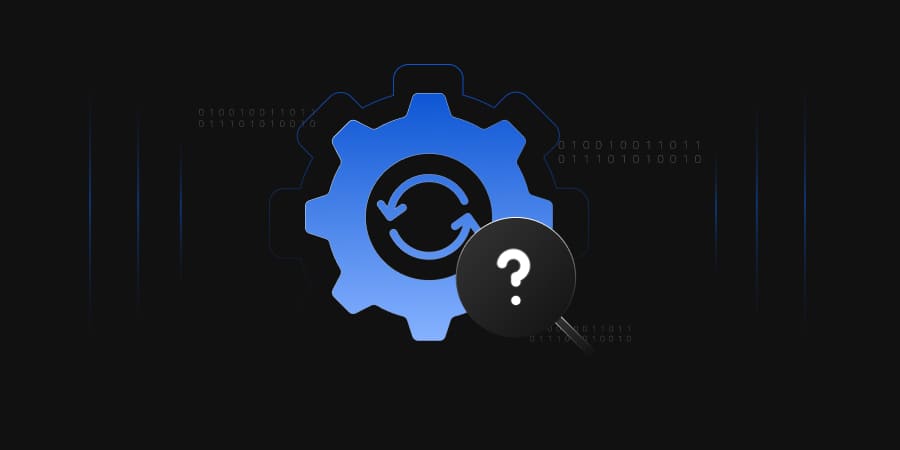Management of a Public Key Infrastructure, or PKI, when it was initially created and utilized was a time-consuming and difficult process. The reason for this was that all the processes involved with maintaining the certificate lifecycle had to be handled manually. Teams of PKI maintainers would have to discover all of the certificates in their organization, list them all in a spreadsheet, and manually remember when and which certificates need to be renewed at the appropriate times.
This can cause a disruption of services if an important certificate’s renewal date is missed or forgotten, resulting in critical services going down because they do not have a valid certificate. Though that was the only practice when PKI was first created, now more and more companies are moving toward the practice of automating certificate lifecycle tasks.
With manual certificate management, those monitoring certificates had to enter the certificates and their renewal dates manually into spreadsheets to keep track of them. Luckily, tools to automate this process have been developed over time, making the automation process much easier. But why should organizations be so intent on changing their certificate lifecycle management to an automated process?
Why is Automated Certificate Management So Important?
As I previously mentioned, the process of manually managing certificates is an extremely time-consuming process, with a high chance of human error occurring, which offers a chance for critical services to go down. Automating Certificate Management is also vital due to the shortening of certificate lifespans. A few years ago, certificates tended to be valid for 5 years, then in 2020 the maximum validity of certificates was lowered to two years, and now there is a discussion of reducing that maximum validity period to 90 days.
With shorter validity periods, manual certificate lifecycle management becomes even more prone to human error as there is more room for errors with a shorter time to keep track of. Part of this automation process is fully understanding what the certificate lifecycle is. The certificate lifecycle begins with the discovery of certificates in an organization.
The discovery process involves searching through the organization for certificates that are in use, noting down their expiry date and the details of the certificate itself. This step is vital to maintaining the status of certificates and ensuring that the certificate is renewed in time to not cause a disruption of services. The next step in the certificate lifecycle is the issuance of a certificate. Without the initial issuance of a certificate, the rest of the process is irrelevant. A certificate is issued by a part of a PKI called a Certificate Authority.
A Certificate Authority, or CA, can be part of an internal PKI and only used within the organization, or it can be an external PKI created and maintained by a well-known and trusted organization. The issuance of the certificate is only completed once certain checks are met for the certificate requestor. Usually, this involves ensuring the requestor is a member of the organization and is authorized to receive a certificate. After the issuance step comes the installation of the certificate.
The installation step involves installing the certificate in an easily accessible and secure location so that the certificate itself can be used, when necessary, but that not just anyone with access to the computer can steal and misuse the certificate. The next phase is the storage of the certificate. Installation and storage go hand in hand, as part of the installation process is storing the certificate securely.
Storage is extremely vital to a certificate, as a threat actor can gain access to an insecurely stored certificate and identify themselves as their victim. With a false identity and access to what that victim can access, an attacker can steal from an organization or do even greater harm with malware under the guise of a trusted employee. Monitoring is the next step in the lifecycle and is one of the most important steps.
Keeping track of certificates’ expiration dates and ensuring they are up to date is an ongoing process that must be kept up at all times. Missing a single certificate’s expiration can end in a major disruption of services, with certain services failing since they do not have a valid certificate. The final 3 steps to the certificate lifecycle can be discussed all at once, as they are similar but separate steps: renewal, revocation, and replacement.
Renewal is the process of renewing a certificate that has expired or, more commonly, renewing a certificate that is about to expire. It is better to renew a certificate before its expiration date, as letting the certificate expire and then renewing it will cause services that need a certificate to function to shut down.
Revocation is only done when a certificate is found to have been compromised by an attacker, or if the device or person issued the certificate has left the organization. If an attacker has compromised a certificate, revoking the certificate will stop them from misusing it, and if an employee has left the organization, revoking the certificate works in the same capacity.
Replacement of a certificate tends to be the least common phase in the certificate lifecycle. If an organization switches from an external PKI to an internal PKI, then the certificates within the organization will all be replaced with new certificates from the internal PKI. As this is a complicated and time-consuming process, it tends to be simpler for organizations to just continue using the same external PKI indefinitely.
Important Capabilities of a Certificate Lifecycle Solution
Now that we have a better understanding of the certificate lifecycle as a whole, let’s take a look at what a certificate lifecycle solution does. The simple answer is that a certificate lifecycle solution, or CLS, automates the day-to-day and long-term operations involved in maintaining a certificate lifecycle. Every step of the certificate lifecycle is covered in a strong CLS, ensuring that you never have to manually manage certificates again.
An example of a process a CLS will take care of is the automatic discovery and cataloging of all certificates in an organization. Integration with tools such as Nessus allows a CLS to find and maintain all certificates at an organization, with the CLS handling the revocation, renewal, and replacement of certificates when appropriate. There are some core functionalities or capabilities a CLS should have if you are thinking of utilizing one.
-
Integration with an organization’s third-party applications
If a CLS cannot integrate easily with third-party applications or systems utilized in your organization that have certificates involved, then that CLS is likely not the one for you. Your company should feel confident that everything using a certificate is being monitored properly and that the CLS is involved at all times.
-
Centralized key management
A CLS also adds the extra benefit of centralizing key management. With a CLS, the keys are all securely stored in one location, allowing for a centralized location for all certificate keys in the organization.
-
Automated processes for each step in the certificate lifecycle
As its function implies, a CLS must have automated processes for each step of the certificate lifecycle to be considered useful. This includes every step of the lifecycle, so when reviewing the functions of a CLS, you should ensure there is some type of automated function relating to each of the phases of the certificate lifecycle.
-
High Availability
Any CLS will need to be readily available if integrated into your organization’s systems. High availability in a CLS means that the platform can be used at all times in any location your organization is located, there should be backup servers or Hardware Security Modules in case one goes down, and there should be easy access to the tool in general.
-
Ability to easily Audit
Another important aspect of a CLS to look for is that there is a reporting function built in. This reporting function should track certificates and keys, when they are utilized, and by whom they are utilized. This makes things easier if your organization must go through an auditing process throughout the years.
-
Alerting
Finally, an alerting functionality should be in place as well. This means that vital certificates that are used will send out an alert when they have been utilized. Additionally, an alert should be sent out when a certificate is about to expire and when it has been renewed.
Conclusion
Certificate lifecycle solutions are the future of PKI maintenance, as they make the process of manually tracking certificates obsolete. The speed and efficiency that a CLS provides an organization is unparalleled.
At Encryption Consulting, we have developed a certificate lifecycle solution, called CertSecure Manager, that will meet all of your organization’s requirements. With discovery tools, integration into third-party tools, API integration, workflow management, and more, you will find that our CLS is one of the best in the market. To learn more about our product or schedule a demo, visit our website at www.encryptionconsulting.com.




